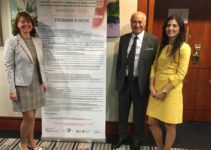Partager la publication "Clinical evaluation of guided bone regeneration at exposed parts of Branemark dental implants with and without bone"
Mattout P, Nowzari H, Mattout C.
Clinical evaluation of guided bone regeneration at exposed parts of Branemark dental implants with and without bone allograft.
This investigation evaluated guided bone regeneration with a polytetrafluoroethylene barrier membrane at exposed parts of Branemark dental implants with and without concomitant use of decalcified freeze-dried bone allograft. Density of the regenerated tissue was also determined using a No. 23 probe at a pressure of 25 g and was graded from 1 to 5. The higher index was associated with a higher resistance of newly formed tissue to the pressure of the probe. In 19 patients, 23 defects were treated by barrier membrane alone and 11 defects by bone allograft with barrier membrane. The width and the depth of the defects were determined at the time of the implant placement and at the second-stage implant surgery.
When success was defined as 0 mm of residual defect, the mean success rate was 68% for the membrane group and 90% for the membrane group with bone allograft, with no statistically significant difference between the two treatment groups. The two groups did not demonstrate a significant difference in median density index. There was a significant positive relationship between time of membrane coverage and density index. A density index of 4 was only recorded after 7 months of membrane coverage. The present findings suggest beneficial clinical effect with the use of membrane alone and freeze-dried bone allograft with membrane for guided bone regeneration. This study proposed the use of a novel density

